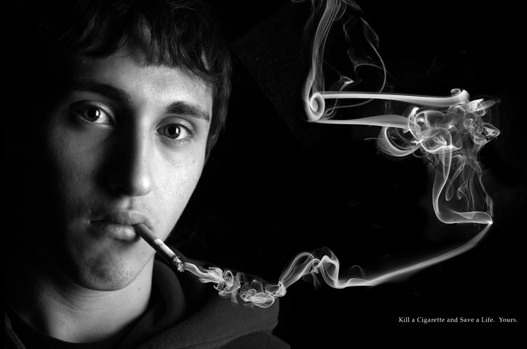 While writing my previous blog post on 3d printing, I chanced upon a TED blog post that discussed its implications in food production. Despite the extremely high-cost that is currently required to 3d-print food, $330,000 for the world’s first lab-grown beefburger. I believe if this technology is perfected, it could revolutionize the food industry.
While writing my previous blog post on 3d printing, I chanced upon a TED blog post that discussed its implications in food production. Despite the extremely high-cost that is currently required to 3d-print food, $330,000 for the world’s first lab-grown beefburger. I believe if this technology is perfected, it could revolutionize the food industry.
The blog discussed the implications 3d printed meat would have on vegetarians and on religious dietary rules. Due to my parents being freethinkers, I never had to deal with religious restrictions on my diet. Therefore i always found it interesting when my Hindu and Muslim friends abstained from certain meats. Would 3d printing circumvent their religious restrictions? And if so this could open a whole market for food producers in for example India where the country’s culture is deeply rooted in religion.
In this blog, the discussions were focused mainly on the opinions of vegetarians. Many considered that 3d printed meat which left animals unharmed were a much better option than factory farming and i agree with them. While i personally will not be giving up meat anytime soon, i feel that the living conditions suffered by animals in factory farming are absolutely horrific. Hopefully, 3d printing will one day be the solution to animal abuse in factory farming.
http://www.dosomething.org/tipsandtools/11-facts-about-animals-and-factory-farms
http://blog.ted.com/2013/09/19/would-you-eat-3d-printed-meat-7-vegetarians-and-vegans-reflect/


 3d printing technology has been improving at a rapid pace. While the technology has been out for quite sometime, only recently has 3d printing progressed from just printing plastic to being able to print complex structures, metals and even organic materials. Researchers have even began printing human organs and the idea of “printing” skin to increase recovery rates of wounded patients could soon be reality. The possibilities for this technology is endless and with it becoming more accessible to the general public, we are quickly approaching the realm thought to only exist within science fiction.
3d printing technology has been improving at a rapid pace. While the technology has been out for quite sometime, only recently has 3d printing progressed from just printing plastic to being able to print complex structures, metals and even organic materials. Researchers have even began printing human organs and the idea of “printing” skin to increase recovery rates of wounded patients could soon be reality. The possibilities for this technology is endless and with it becoming more accessible to the general public, we are quickly approaching the realm thought to only exist within science fiction. Snapchat, the latest craze amongst teenagers, is a smart phone application which allows users to send customizable photos and videos called “snaps” to each other. These Snaps then automatically delete themselves after an allocated period of time. With its ease of access and user friendly interface, Snapchat has replaced the conventional MMS (multimedia messaging service) message.
Snapchat, the latest craze amongst teenagers, is a smart phone application which allows users to send customizable photos and videos called “snaps” to each other. These Snaps then automatically delete themselves after an allocated period of time. With its ease of access and user friendly interface, Snapchat has replaced the conventional MMS (multimedia messaging service) message.
 Freshness burger, a national burger chain in Japan, faced an unusual challenge. Its classic burger, the largest burger on their menu, had the lowest sales amongst female customers. With the help of the advertising company, Dentsu Tokyo Inc, Freshness burger dug out the root of the problem and found that the low sales were linked to a particular perception of beauty in Japan. The “Ochobo” or small mouthed women were perceived to be elegant and attractive in Japanese culture. Therefore, taking a large bite out of the classic burger was viewed to be unattractive thus deterring Japanese women from purchasing them.
Freshness burger, a national burger chain in Japan, faced an unusual challenge. Its classic burger, the largest burger on their menu, had the lowest sales amongst female customers. With the help of the advertising company, Dentsu Tokyo Inc, Freshness burger dug out the root of the problem and found that the low sales were linked to a particular perception of beauty in Japan. The “Ochobo” or small mouthed women were perceived to be elegant and attractive in Japanese culture. Therefore, taking a large bite out of the classic burger was viewed to be unattractive thus deterring Japanese women from purchasing them.

 This article is about investment manager Terrence Bedford who was found guilty of running a fraudulent trading scheme that cost investors $5-million. Terrence Bedford ran Hamilton-based Greyhawk Equity Partners LP and as we learned in class, succumbed to corruption due to the fact that he could easily bend the rules to his favor.
This article is about investment manager Terrence Bedford who was found guilty of running a fraudulent trading scheme that cost investors $5-million. Terrence Bedford ran Hamilton-based Greyhawk Equity Partners LP and as we learned in class, succumbed to corruption due to the fact that he could easily bend the rules to his favor.